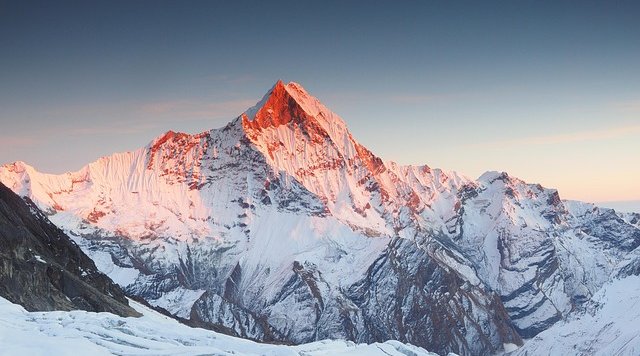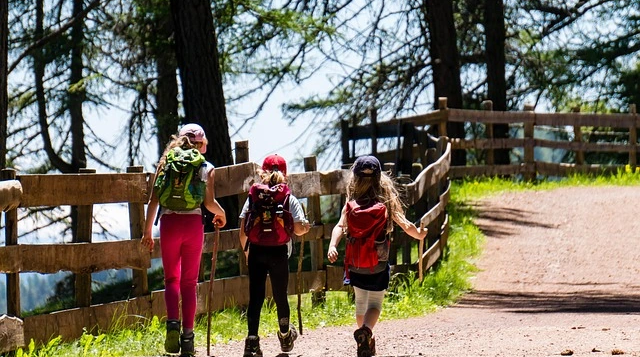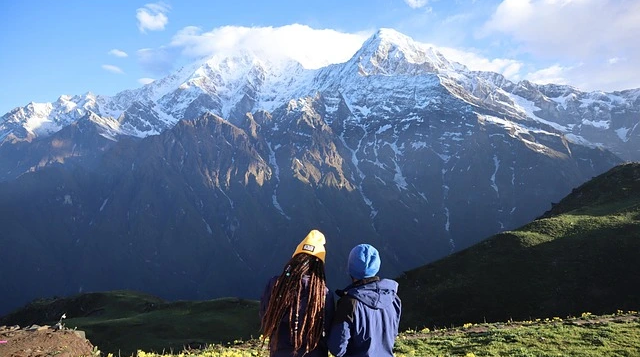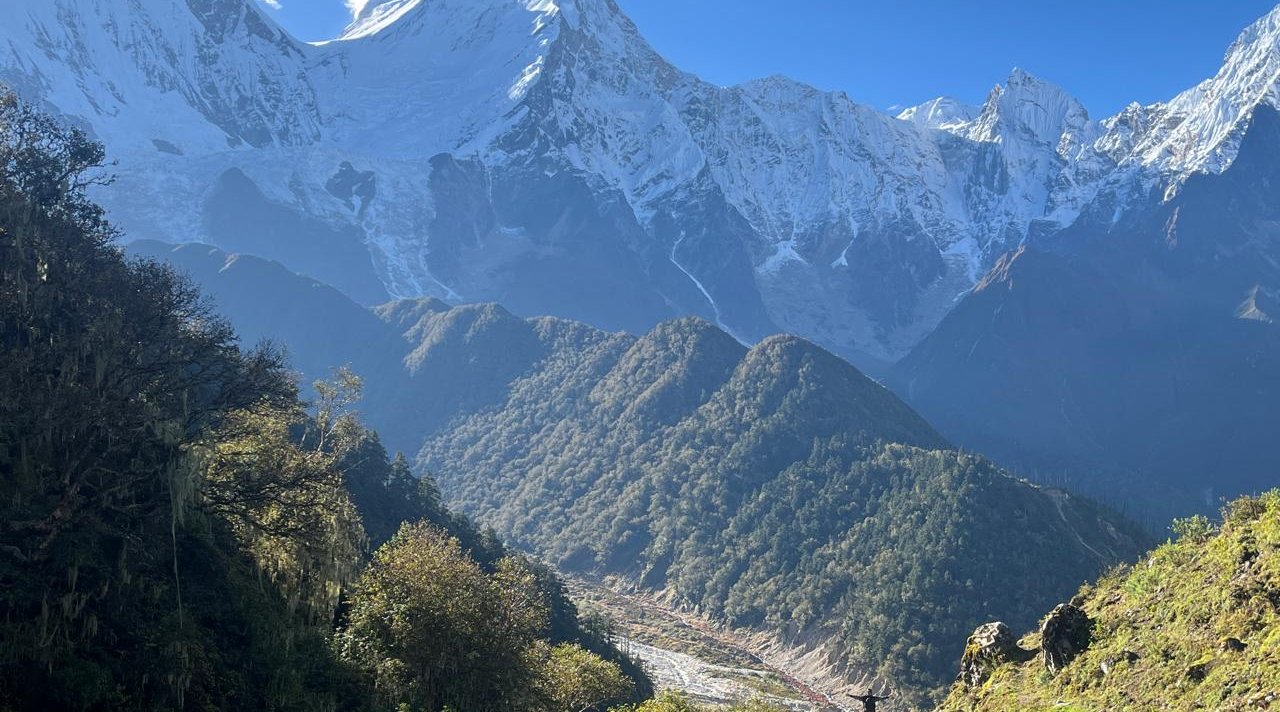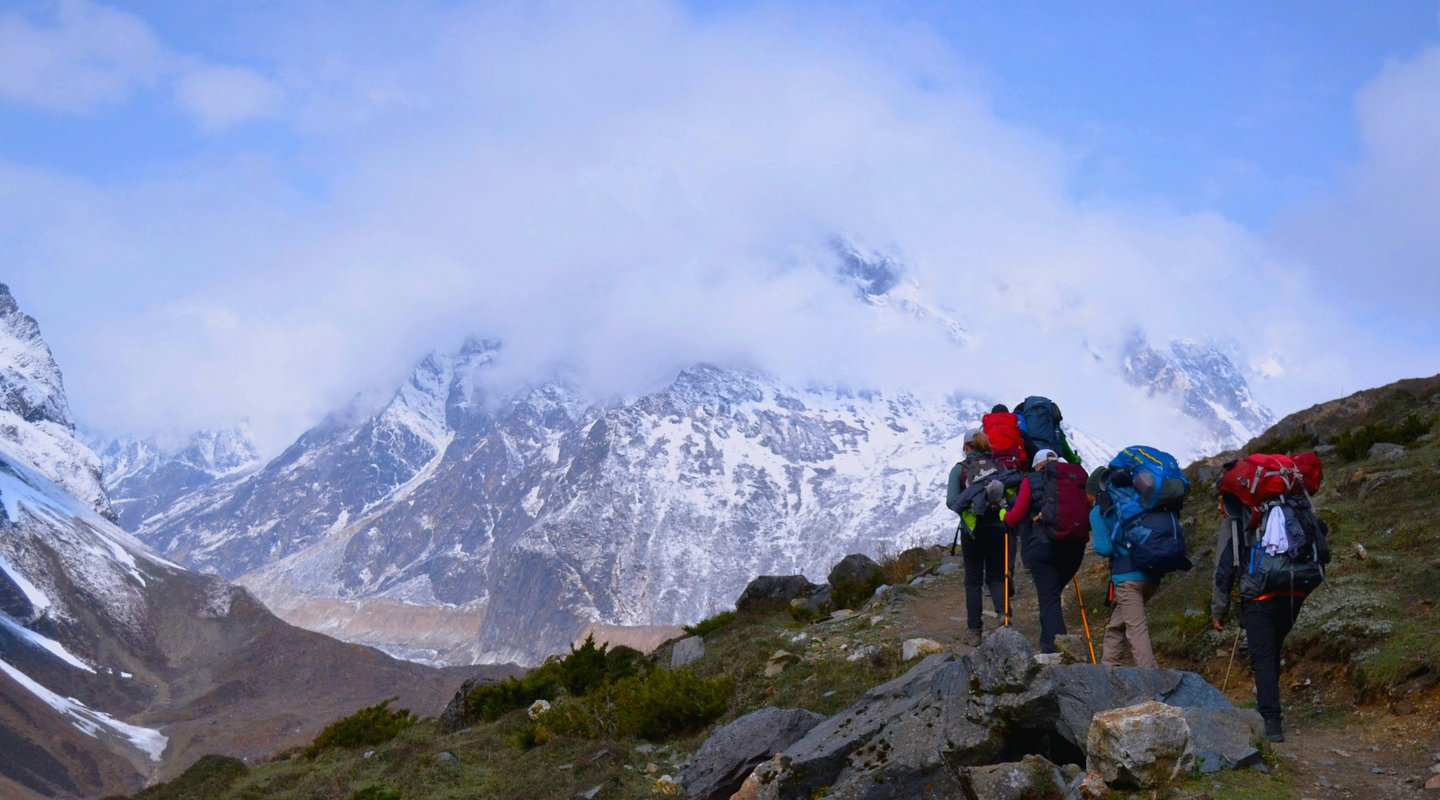The journey to Everest Base Camp doesn't always begin with a heart-stopping flight into Lukla. For many adventurers, the best time for Everest Base Camp trek by road combines the thrill of overland travel with strategic seasonal planning. This road-based approach offers gradual acclimatization and authentic cultural experiences that flight-dependent trekkers often miss.
Choosing the right season transforms your entire experience. Whether you're driving through the winding roads to Salleri or taking the scenic route to Phaplu, understanding seasonal weather for EBC road journey helps you maximize both safety and enjoyment. The road trek presents unique advantages—no flight cancellations, better acclimatization, and the freedom to explore remote villages at your own pace.
Peak Seasons Overview
The best season for Everest Base Camp road trek traditionally falls into two distinct windows. Each offers compelling reasons to lace up your boots and hit the trail. Understanding these peak periods helps you align your adventure with your personal preferences and trekking goals.
Spring (March-May): Rhododendron Season
Spring brings magic to the Everest region. The Everest Base Camp trek in spring transforms mountainsides into vibrant tapestries of color. This pre monsoon best time EBC overland offers warming temperatures and nature's most spectacular flower show.
Key advantages of spring trekking:
- Rhododendron forests explode in pink, red, and white blooms
- Warming temperatures make high-altitude camping comfortable
- Climbing season excitement with expeditions preparing for summit attempts
- Wildlife becomes more active after winter hibernation
- Road conditions remain stable with minimal precipitation
The optimal time to drive to Everest Base Camp trek in spring is mid-March through April. Roads are dry and well-maintained after winter. Daytime temperatures at lower elevations reach a comfortable 15-20°C, though nights remain chilly above 3,000 meters.
Spring considerations for road trekkers:
- Book accommodations early as climbing teams occupy many lodges
- Afternoon clouds can obscure mountain views by late April
- Dust on unpaved road sections increases as surfaces dry
- Popular photo spots become crowded during peak bloom periods
Autumn (September-November): Clear Mountain Views
The EBC autumn trekking pros cons debate typically ends with autumn winning. Post-monsoon clarity delivers the year's most spectacular mountain vistas. The post monsoon advantages for driving to EBC start include freshly washed skies and stable weather patterns.
Why autumn dominates the trekking calendar:
- Crystal-clear views lasting from dawn to dusk
- Stable weather with minimal precipitation
- Comfortable temperatures for all fitness levels
- Festivals like Dashain and Tihar add cultural richness
- Roads in optimal condition after monsoon maintenance
The best season to trek Everest Base Camp by road reaches its pinnacle in October. However, this popularity brings crowds. The shoulder season benefits Everest Base Camp by vehicle become apparent in early September or late November when visitor numbers drop but conditions remain favorable.
Autumn road trek highlights:
- September offers post-monsoon freshness with fewer crowds
- October delivers perfect weather but requires advance planning
- November brings cooler temperatures with increasing solitude
- Road journey showcases terraced fields during harvest season
Month-by-Month Breakdown
Understanding monthly variations helps pinpoint your ideal trekking window. Each month presents unique characteristics that influence both the driving and trekking experience.
March: Early Spring Conditions
Everest Base Camp trek weather in March by road marks winter's end and spring's beginning. This transitional period offers excellent value for prepared trekkers. Temperatures gradually warm throughout the month, making it increasingly comfortable for high-altitude adventures.
March trekking conditions:
- Daytime temperatures: 10-15°C at trailhead, -2 to 5°C at Base Camp
- Night temperatures can still drop to -15°C above 4,000 meters
- Snow possible at higher elevations, especially early March
- Rhododendrons begin blooming at lower elevations by month's end
- Roads generally clear but watch for morning frost
The best weather months for driving to EBC start begin in March. Winter's harsh conditions have passed, but summer crowds haven't arrived. This sweet spot offers both good weather and relative solitude.
March preparation tips:
- Pack quality cold-weather gear for higher elevations
- Bring layers to accommodate temperature swings
- Consider microspikes for potentially icy trail sections
- Book tea houses in advance as some may still be closed
April-May: Perfect Weather Windows
April weather for EBC trek overland delivers near-perfect conditions. The May conditions on Everest Base Camp road route continue this trend, though pre-monsoon buildup begins late in the month. These months represent the traditional climbing season, bringing excitement and energy to the entire region.
April highlights:
- Warmest temperatures of the year at all elevations
- Rhododendron forests reach peak bloom
- Stable weather with minimal precipitation
- Full moon in April offers spectacular night trekking opportunities
- Road conditions excellent with all sections accessible
May characteristics:
- Summit push excitement as expeditions make attempts
- Increasing afternoon cloud cover, especially after mid-month
- Pre-monsoon showers possible in final week
- Warmest night temperatures reduce cold-weather gear requirements
- Dust increases on unpaved road sections
The what month for Everest Base Camp overland trek question often leads to April. This month balances optimal weather with manageable crowds. The Phaplu road trek to Everest Base Camp weather guide shows April offering the most predictable conditions.
Peak season logistics:
- Reserve accommodations 2-3 months in advance
- Consider starting very early to avoid afternoon clouds
- Bring sun protection as UV intensity peaks
- Prepare for busier trails and shared facilities
September-October: Post-Monsoon Clarity
September weather pros for EBC by vehicle include dramatically clear skies after monsoon washing. The October Everest Base Camp trek climate by road represents many trekkers' ideal conditions—stable, clear, and comfortable.
September advantages:
- Fresh, dust-free air after monsoon rains
- Lush green landscapes at lower elevations
- Waterfalls and rivers at their most impressive
- Fewer crowds than October peak
- Wildlife sightings increase as animals prepare for winter
October perfection:
- Year's best mountain visibility
- Stable high-pressure systems dominate
- Comfortable temperatures at all elevations
- Festival atmosphere with Dashain and Tihar celebrations
- Roads in excellent post-monsoon condition
The ideal season for avoiding flights to EBC coincides with October's popularity. While Lukla flights face frequent weather delays, road access remains reliable. This road access to Everest Base Camp seasonal differences becomes a significant advantage.
Autumn trekking strategies:
- Book everything early for October trips
- Consider late September for fewer crowds
- Pack warm layers as temperatures drop quickly after sunset
- Bring camera equipment for exceptional photography conditions
November: Cool but Clear
November cold on EBC road trek introduces winter's approach while maintaining autumn clarity. This transitional month offers remarkable value for cold-tolerant trekkers. The avoiding crowds on EBC road trek becomes easier as visitor numbers decline significantly after mid-month.
November conditions:
- Crystal-clear skies with exceptional visibility
- Cold but manageable temperatures
- Shorter days require efficient trekking schedules
- Tea houses begin reducing services late in month
- Road conditions remain good but watch for morning ice
November trekking benefits:
- Dramatic mountain views with snow-capped peaks
- Peaceful trails with genuine local interactions
- Lower accommodation prices
- Stunning photography with low-angle winter light
- Wildlife more visible as vegetation thins
The Everest Base Camp by road in shoulder season experience peaks in November. You'll enjoy autumn's clarity without October's crowds. This timing particularly suits experienced trekkers comfortable with colder conditions.
Off-Season Options
Venturing beyond peak seasons opens unique opportunities. The off season Everest Base Camp trek timing by road requires careful planning but delivers exceptional rewards.
Winter (December-February): Budget & Solitude Benefits
Winter Everest Base Camp by road attracts hardy adventurers seeking solitude. December snow risks for Everest Base Camp drive and trek require preparation, but the experience is unforgettable. Everest Base Camp trek weather January by road brings the year's coldest temperatures, while February low temps EBC overland journey continues winter's grip.
Winter advantages:
- Complete solitude on normally busy trails
- Accommodation discounts of 30-50%
- Crystal-clear skies with minimal precipitation
- Stunning snow-covered landscapes
- Authentic local interactions without tourist crowds
Winter challenges:
- Extreme cold with temperatures reaching -20°C at Base Camp
- Some tea houses close above 4,000 meters
- Road sections may require chains or 4WD vehicles
- Shorter daylight hours limit trekking time
- Risk of sudden snowstorms requiring flexibility
The winter cons of driving to Everest Base Camp start include potential road closures. However, main routes typically remain passable with proper vehicles. The budget tips for seasonal EBC trek by vehicle point to winter for maximum savings.
Winter preparation essentials:
- Four-season sleeping bag rated to -20°C
- Insulated boots and comprehensive layering system
- Emergency shelter and communication devices
- Flexible itinerary allowing for weather delays
- Consider hiring experienced local drivers familiar with winter conditions
Monsoon (June-August): Why to Avoid
The monsoon risks EBC road trek generally outweigh benefits. Monsoon avoidance for EBC road trip is standard advice, though some intrepid trekkers find rewards in this challenging season.
Monsoon challenges:
- Daily rainfall, especially at lower elevations
- Landslide risks on road sections
- Leeches below treeline
- Limited mountain views due to clouds
- Muddy, slippery trail conditions
Surprising monsoon benefits:
- Absolute solitude on trails
- Lush, green landscapes
- Dramatic cloud formations
- Cultural immersion in villages
- Significant discounts on all services
The Everest Base Camp trek timing by vehicle during monsoon requires maximum flexibility. Road travel becomes unpredictable with potential multi-day delays. Only experienced adventurers with ample time should consider this option.
Road-Specific Seasonal Considerations
The overland approach presents unique seasonal factors absent from flight-based treks. Understanding these helps optimize your journey from Kathmandu to the trailhead.
Drive Conditions by Season
The best time for Salleri drive to EBC trek varies with road conditions. Each season transforms the 8-10 hour journey differently. The road journey to EBC vs flying seasonal pros cons become apparent when considering driving challenges.
Spring road conditions (March-May):
- Dry, stable surfaces with good visibility
- Dust increases as season progresses
- All road sections typically accessible
- Comfortable driving temperatures
- Minimal precipitation except late May
Autumn road conditions (September-November):
- Excellent conditions post-monsoon maintenance
- Clear visibility for scenic mountain views
- Cool, comfortable temperatures
- Morning fog possible in valleys
- Ice formation at higher elevations by late November
Winter road conditions (December-February):
- Snow and ice above 2,500 meters
- Chains or 4WD often necessary
- Shortened driving hours due to conditions
- Beautiful but challenging mountain passes
- Possible route changes due to closures
Monsoon road conditions (June-August):
- Frequent landslides and washouts
- Muddy, slippery surfaces
- Poor visibility from rain and fog
- Extended journey times common
- Alternative routes may be necessary
The pros of EBC trek by road in autumn include optimal driving conditions. The Everest Base Camp by road vs flight best time comparison favors road travel during stable weather periods when flight delays are common.
Village Accessibility
The when to plan Everest Base Camp by road decision impacts village experiences. Seasonal variations affect not just weather but also local life and services.
Peak season village atmosphere:
- Full services with all lodges operational
- Diverse food options including Western cuisine
- Busy but vibrant social atmosphere
- Cultural shows and activities for tourists
- Higher prices but guaranteed availability
Shoulder season village benefits:
- More authentic local interactions
- Flexible accommodation negotiations
- Personalized service from lodge owners
- Participation in genuine local festivals
- Balance between services and authenticity
Off-season village considerations:
- Limited lodges operational
- Basic menu options
- Intimate atmosphere with few tourists
- Potential language barriers without tourist-oriented staff
- Genuine cultural immersion opportunities
The family friendly seasons Everest Base Camp road route lean toward peak periods when full services ensure comfort. The best time EBC by road for beginners similarly favors established seasons with reliable infrastructure.
Booking Recommendations by Season
Strategic planning maximizes both experience and value. The peak season guide for EBC road trek differs significantly from off-season approaches.
Peak Season Booking (April, October):
- Reserve accommodations 2-3 months ahead
- Book vehicle transport early for better rates
- Confirm guide and porter availability
- Purchase permits in advance when possible
- Consider package deals for convenience
Shoulder Season Flexibility (March, May, September, November):
- Book key accommodations 3-4 weeks ahead
- Maintain flexibility for weather adjustments
- Negotiate better rates on services
- Consider independent trekking with local support
- Take advantage of last-minute deals
Off-Season Strategies (December-February, June-August):
- Confirm operational lodges before departure
- Build buffer days for weather delays
- Arrange backup accommodation options
- Consider camping equipment for flexibility
- Hire experienced local guides familiar with conditions
The avoiding Lukla flight EBC best season often coincides with challenging flight weather. Road trekkers benefit from this reliability, especially during shoulder seasons when flights face frequent cancellations.
Quick Seasonal Comparison Guide
Spring (March-May): Offers warm weather with increasing afternoon clouds as the season progresses. Expect moderate to high crowds, especially in April. Road conditions remain excellent throughout. This season is best for rhododendron flowers and wildlife viewing, with a moderate challenge level suitable for most trekkers.
Autumn (September-November): Delivers the clearest, most stable weather of the year. Crowds are high in October but moderate in shoulder months. Road conditions are at their best post-monsoon. Perfect for mountain photography and views, with an easy to moderate difficulty level.
Winter (December-February): Features cold but crystal-clear weather with very few other trekkers on the trail. Road conditions become challenging, often requiring special vehicles. Ideal for those seeking solitude and budget travel, though the difficulty level increases significantly due to extreme cold.
Monsoon (June-August): Brings daily rainfall and cloudy conditions with minimal tourist presence. Road conditions are poor with landslide risks. While challenging, it offers authentic cultural immersion opportunities. This season presents the highest difficulty level and requires maximum flexibility.
Conclusion
The best time for Everest Base Camp trek by road ultimately depends on your priorities and experience level. October and April offer optimal conditions for most trekkers, combining stable weather with full services. However, the road approach's flexibility opens year-round possibilities that flight-dependent treks cannot match.
Spring rewards with rhododendron blooms and warming temperatures. Autumn delivers unmatched mountain clarity. Winter offers solitude and dramatic snow-covered landscapes. Even monsoon provides unique cultural experiences for the adventurous.
The Everest Base Camp trek best season varies by individual preference. Road trekkers enjoy greater flexibility, gradual acclimatization, and independence from weather-dependent flights. Whether you choose peak season comfort or off-season adventure, the overland journey to Everest Base Camp promises memories to last a lifetime.
Ready to start planning your trek? Explore our comprehensive Everest Base Camp road trek package designed specifically for beginners and road trek enthusiasts. Our expert team will help you choose the perfect season based on your preferences and experience level.
Contact us for personalized trek planning:
Your perfect season awaits—it's simply a matter of matching your dreams with the right timing. The mountains stand ready whenever you are.
FAQs about Best Time for the Everest Base Camp Trek by Road
What's the overall best time to visit Everest Base Camp by road for first-timers?
Late September to early October offers ideal conditions for beginners. You'll enjoy post-monsoon clarity, moderate temperatures, and full services while avoiding peak October crowds.
How does the Everest Base Camp seasonal trekking calendar affect road accessibility?
Spring and autumn provide optimal road conditions. Winter may require 4WD vehicles or chains, while monsoon brings landslide risks requiring flexible planning and experienced drivers.
What are the best months for Everest trek by road to avoid both crowds and bad weather?
Early March and late November strike the perfect balance. You'll experience good weather with significantly fewer trekkers, though you'll need proper cold-weather gear.
How should I approach Everest Base Camp trek preparation by season?
Spring requires versatile layering for temperature swings. Autumn demands wind protection. Winter necessitates extreme cold gear. Monsoon requires comprehensive waterproofing. Always prepare for conditions 10°C colder than expected.
When is the EBC trek weather guide most favorable for photography?
October offers the clearest skies and best visibility. November provides dramatic lighting with snow-covered peaks. April balances good weather with rhododendron blooms. Winter delivers stunning landscapes with perfect clarity.
What month should I plan for the most budget-friendly Everest Base Camp overland trek?
February offers the best value with winter discounts but improving weather. Early December provides shoulder-season prices with autumn clarity. Avoid April and October when prices tend to peak.
How do road conditions affect choosing between spring vs autumn for EBC trek?
Both seasons offer excellent road conditions. Spring roads are dry but dusty, while autumn roads are freshly maintained post-monsoon. The main difference is autumn's superior mountain visibility versus spring's warmer temperatures and flowers.


